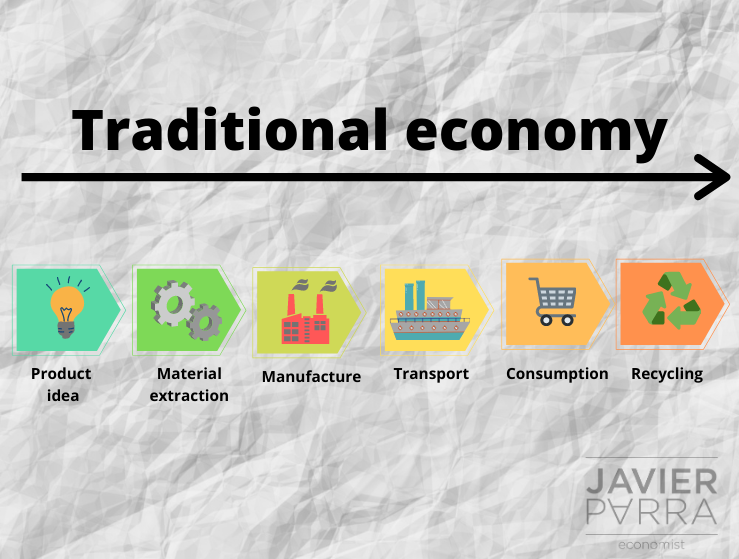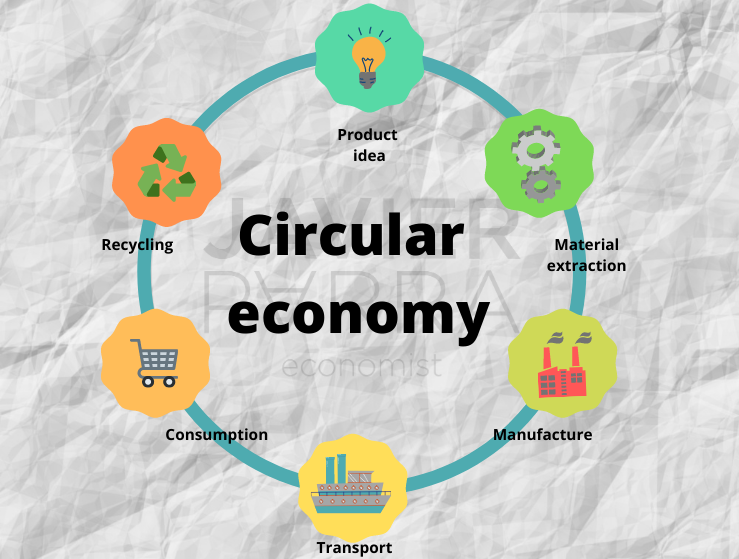Although the circular economy concept is not entirely new, it has gained a lot of momentum among both scholars and practitioners. Yet, its critics claim that it can mean many different things to different people. Today the concept has become popular, especially with the promotion of the concept by the European Union (EU), various national governments and many companies and organisations worldwide.
Countries promoting the circular economy concept include Japan, China, France, Canada, the United Kingdom, Finland, Sweden and the Netherlands, and the European Union, whose Commission recently estimated that circular economic transitions could create 600 billion euros in annual economic gains for the manufacturing sector.
What is novel and really interesting about the circular economy is that it provides an economical system with an alternative flow model to the traditional linear model of extraction, use and disposal of materials and energy flow of the modern economic system that has become unsustainable.
Concept of circular economy
Since the dawn of time, the idea of material cycles has existed and has been linked to the concept of industrialisation. Based on the idea that the circular economy seeks to reduce negative environmental impacts and stimulate new business opportunities within industrialisation, although the linear flow has dominated the overall development causing severe environmental damage.

The concept of the circular economy emerged in the late 1970s, attributed to Pearce and Turner who described how natural resources influence the economy by providing inputs for production and consumption, and how they serve as a sink for outputs in the form of waste, and investigated the linear and open form and characteristics of contemporary economic systems. Added to this is the work of Boulding, who describes the earth as a circular place with a limited assimilative capacity. Hence, it is not illogical to think that it is necessary and vital that both economy and environment coexist in equilibrium.

The circular economy can be defined as the process of thinking of all aspects of the (overall) economy as circular, rather than thinking of it as linear in such a way that each phase takes into account the following phases. This is based on the fact that instead of producing a lot, it is necessary to think about producing better, saving as much as possible in materials, devising ways to make the waste generated in the manufacturing process profitable, or thinking about how products can be reused after their useful life.
By reusing materials and using waste, the extraction of materials is minimised, saving companies the high costs involved, and nature breathes. By doing this, it is estimated that extraction could be reduced by 70%, which means less material to transport, lower costs and less pollution.
As the materials manufactured would be created with recycling in mind, the effort involved in manufacturing new parts would also be minimised. Also, the waste generated can always be reused and made profitable for other businesses.
The policy and business-oriented approach of the circular economy emphasises the reuse of products, materials and components, remanufacturing, repair, refurbishment and upgrading. The use of solar, wind, biomass and the reuse of energy derived from the waste throughout the product value and life cycle.
A circular economy focusing on the industrial economy describes industrial strategies for waste prevention, regional job creation, resource efficiency and dematerialisation of the industrial economy. It also emphasises the use of sale rather than ownership of goods as a sustainable business model for a loop economy, allowing industries to benefit without externalising the costs and risks associated with waste.
Understanding how the circular economy currently works and its application to economic systems and industrial processes allow us to evolve to recognise how it incorporates different characteristics and contributions to a variety of concepts that share the idea of closed loops.




